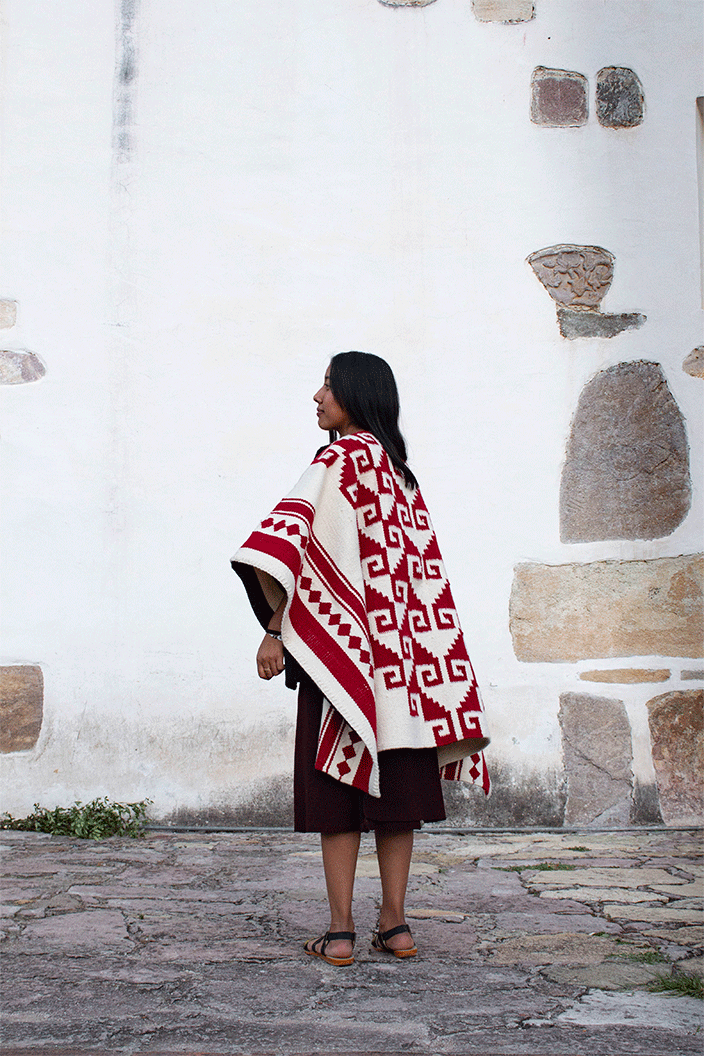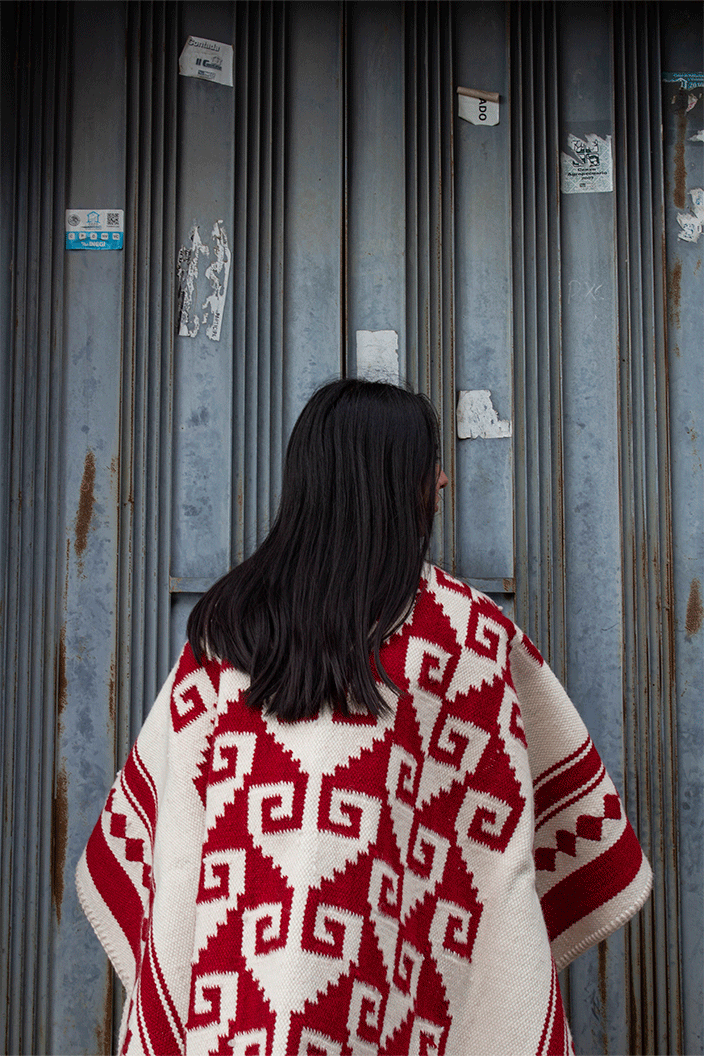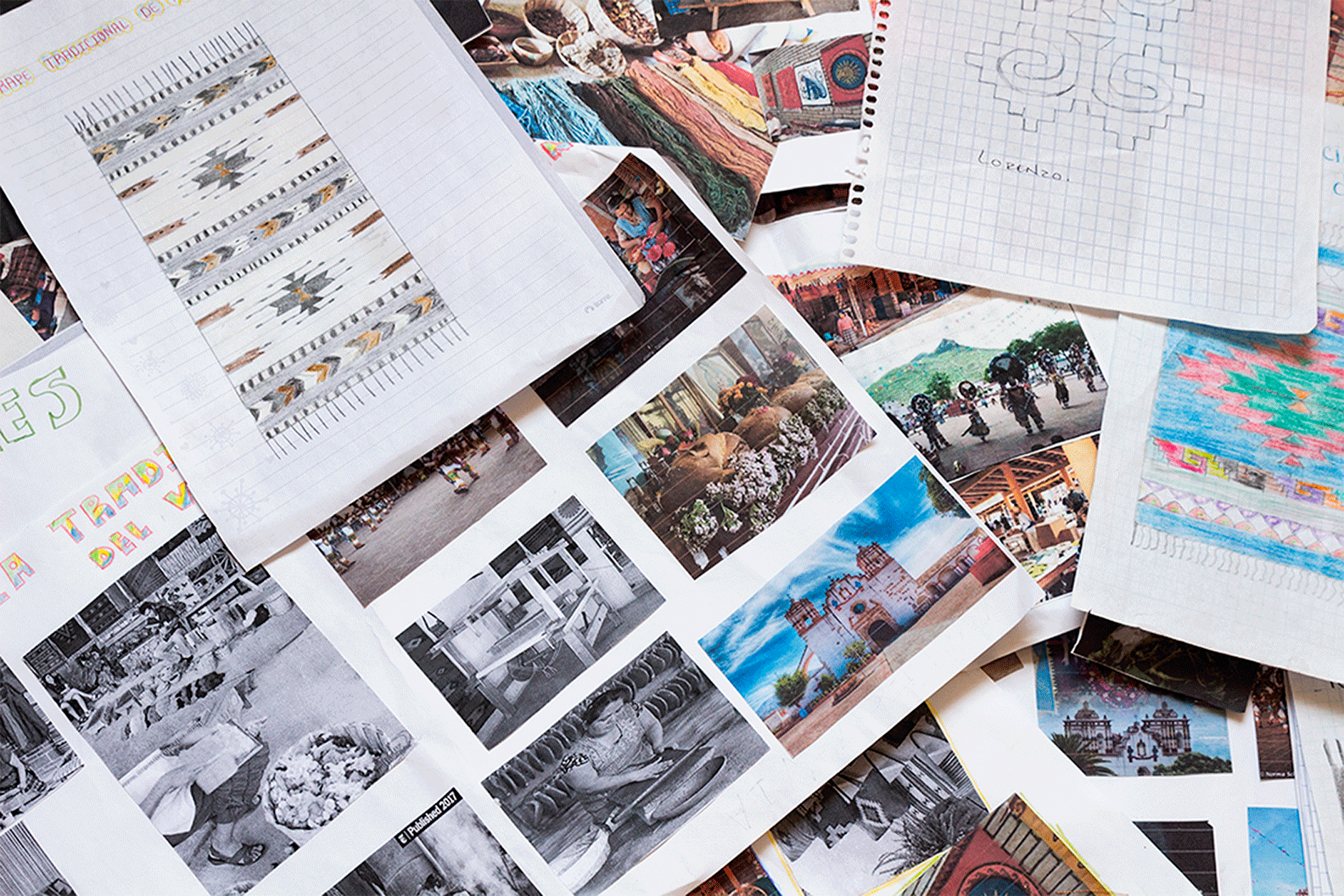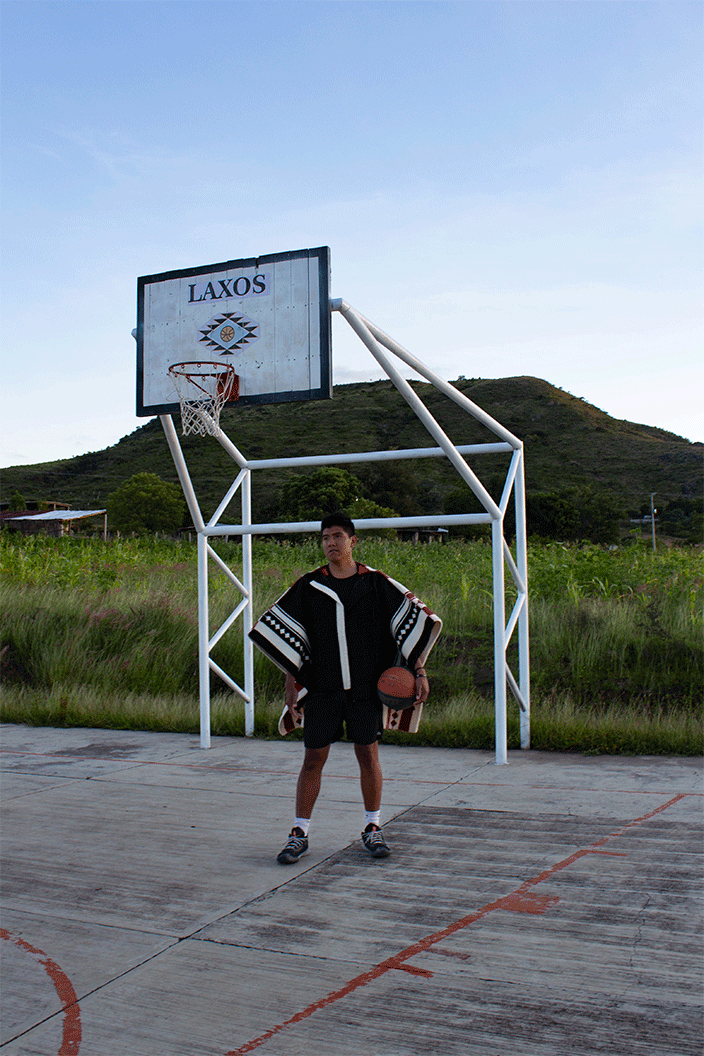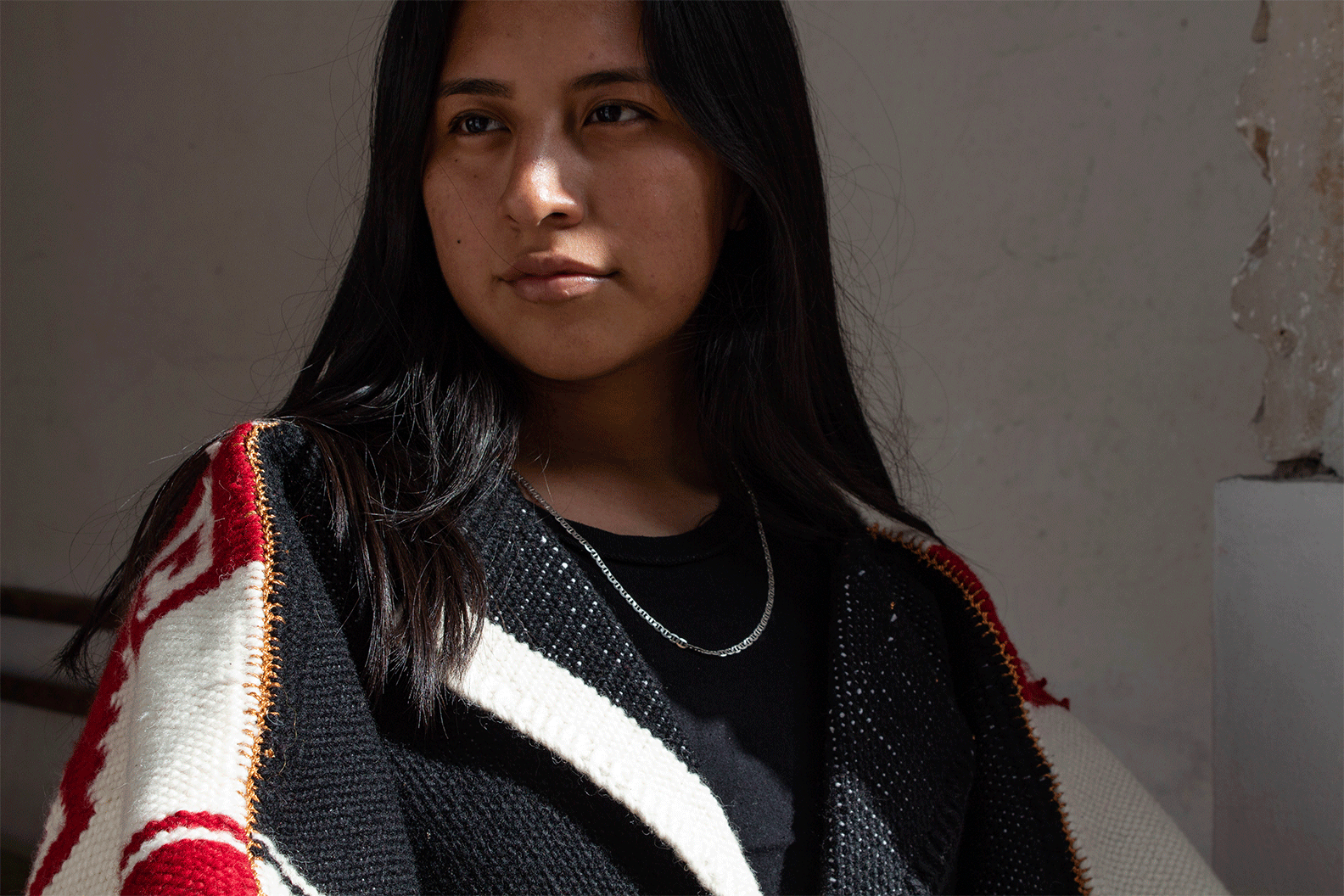Cudssa: Mi origen (My Origin) A collaborative critical design project by Bi Yuu’s artisan and design team
A Commission by José de la O for the exhibition Disonancia Mexicana. Museo Franz Mayer, Mexico City.
Collaborators: Andrés Sosa, Araceli Bautista, Diego Bautista, Gloria Sosa, Jesús Sosa, Lorenzo Bautista, Marcos Vicente, Marisol Centeno, Nicole Equiza, Paola Mendoza, Rocío Pérez, Sandra Luz Pérez, Leticia Gutiérrez, and Leticia Martinez.
Year: 2022
Commissioned for Disonancia Mexicana, Cudssaa is a sarape born from the intention to create a space for dialogue and reflection among three generations of artisans from Teotitlán del Valle, Oaxaca — a community with whom Bi Yuu has collaborated for over a decade. Here, design serves not as the end but as the means.
The project unfolded through a series of generative activities — interviews, drawings, collages, family photo research, and curated playlists — inviting participants to contemplate what it means to be Zapotec today. In this almost existential reflection, artisans from Teotitlán del Valle explored how they see themselves as Mexicans and Zapotecs and how these identities have evolved across generations. They acknowledged how forces like globalization and technology have enriched, reshaped, or sometimes diluted the traditions and customs of their community.
Through collective dialogue, it became clear that weaving remains a powerful symbol of identity for the older generations of Teotitlán. In contrast, the youth honor their Zapotec roots through a different lens—one not necessarily tied to the craft of pedal loom weaving. They embrace community and unity but also champion individuality, a value that has grown stronger among the younger generation.
Historically, pedal loom weaving was reserved for making blankets and sarapes. While exploring the photographic archives of artisans Jesús Sosa and Lorenzo Bautista, images of their grandparents surfaced, inspiring the creation of a sarape — a symbol of protection and a reflection of both collective and individual identity.
The sarape was divided into two faces to weave each generation's reflections and concerns into the textile. The back represents the communal spirit — "the one that always has your back, shelters you, and anchors your identity." Dyed with cochineal, the prickly pear cactus's blood carries intricate grecas (geometric patterns) — a tribute to history and origin. Yet, this side also embodies the weight of tradition, the unspoken expectations that younger generations sometimes bear as they navigate the tension between cultural heritage and contemporary identity shaped by Western ideals.
The front, in contrast, is composed of two black panels that wrap around the body, featuring a simple stripe and evolving forms. Black, intriguingly, was the color most young participants identified with — a shade of strength, mystery, and quiet rebellion.
Copper thread binds the piece together, symbolizing how technology acts as both a bridge and a frontier — a means of preserving tradition through broader dissemination while also offering a window to worlds beyond the community.
Cudssaa is not merely a garment but a woven dialogue between past and future, tradition and transformation, community and individuality.


